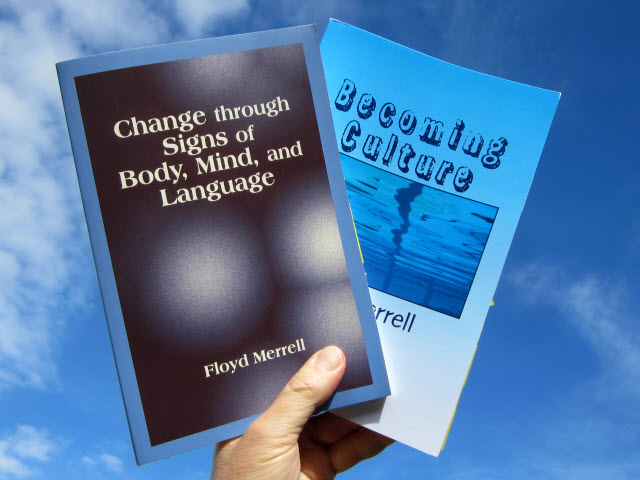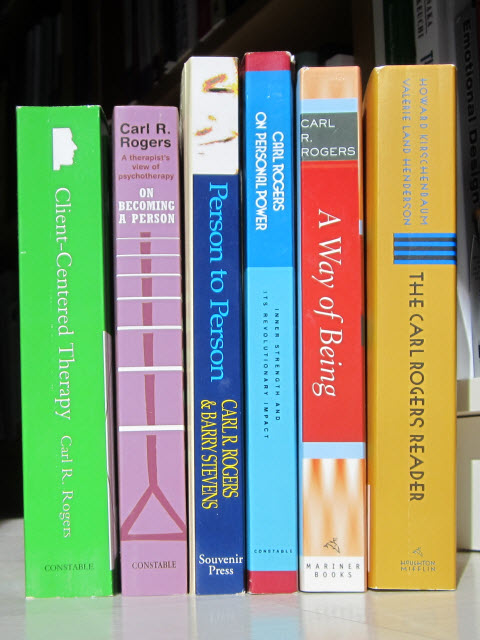This is a post in my series on organizing ”between and beyond.” Other posts are here. This is a retrospective of what has happened during the week. The purpose is to reflect on the work itself. Here is my previous retrospective. Here is my next retrospective.
What has happened? What needs to be done?
This week, I finished reading Floyd Merrell’s two books Change through Signs of Body, Mind, and Language (2000), and Becoming Culture (2012). Merrell is an excellent author. And Becoming Culture, which is Merrell’s latest book, is brilliant. The book taps into Charles Sanders Peirce’s alternative style of logic, which is useful for understanding cultural processes. Peirce’s logic is also useful for understanding organizing.

People are self-directed. Floyd Merrell introduces the notion of resistormity to describe the middle way between conformity and resistance.1 Merrell uses the Spanish American colonial period as an example. He writes:
- “Conformity plus resistance is reminiscent of that maxim, made notorious during the Spanish American colonial period: … ‘I obey (overtly), but (covertly) I do not comply’ …”2
- “… prior to adopting an alternative response, these subjects were likely suffering from what in today’s terms we might call ‘cognitive dissonance’. They seemed to be in emotional and intellectual limbo … They were … awaiting the chance to embrace some possible and somewhat promising alternative.”3
In other words, people are resistormers – conformers, yet resistors.
| ’Resistormity’4 | ||
| Conformity | Middle Way | Resistance |
| Iteration (Linear) | Recursivity (Nonlinear) | |
| Many is of utmost importance | Singularity, Oneness, uniqueness, is of increasing importance | |
| Predictability, of the collectivity | Uncertainty, of the unique individual | |
| Conventional knowing | Unknowing knowing | |
| Knowing upfront is prioritized | Knowing through retrospection is usually of greatest value | |
| A ‘Black Swan’ is a shocking and unwanted surprise, hence initially resisted | A ‘Black Swan’ is expected, and readily accommodated | |
| ‘Grue’ remains virtually unintelligible | ‘Grue’ can be made intelligible (through the ‘middle way’) | |

I read several of Carl Rogers’ books in 2013. I revisited some of his thinking this week. Here is Samuel Tenenbaum’s article about Carl Rogers and Non-Directive Teaching. Tenenbaum writes that “Non-directive teaching has profound implications” which “extends to every area where human beings communicate and try to live with one another.”4
Here is also Nicola Davies post on Carl Rogers’ Organismic Valuing Process,5 which reminds me of Robert Hartman’s theory of value.6 Organismic valuing is based on authenticity, autonomy, internal locus of evaluation, unconditional positive regard, process living, relatedness, and openness to inner and outer experience. All this is related to life enhancing and life sustaining organizing.
What was good? What can be improved?
It’s so interesting to notice how books I’ve read recently gives me new perspectives on books I read several years ago. I need to re-read Carl Rogers’ books.
Notes:
1 Floyd Merrell, Becoming Culture (CreateSpace, 2012), p.159.
2 Ibid., p.156.
3 Ibid., p.158.
4 Floyd Merrell invites the reader to contemplate this table in view of what is suggested throughout the book. Ibid., p.159.
5 Samuel Tenenbaum, Carl R. Rogers and Non-Directive Teaching (ASCD, 1959) (assessed 2017-04-23).
6 Nicola Davies, The Organismic Valuing Process (2014-11-21) (accessed 2017-04-23).
7 Robert S. Hartman, The Structure of Value: Foundations of Scientific Axiology (Wopf & Stock, 2011, first published 1967).
Related posts:
Organizing in between and beyond posts
Leave a Reply
You must be logged in to post a comment.